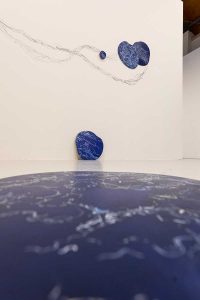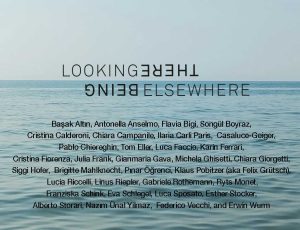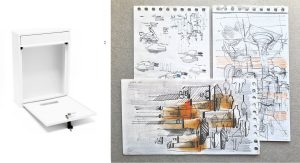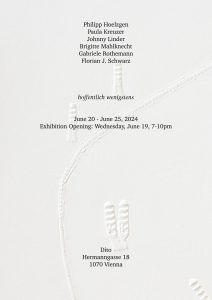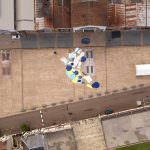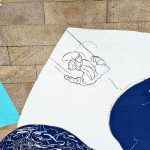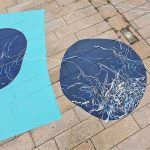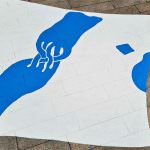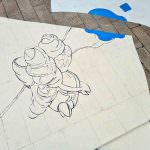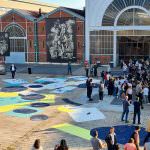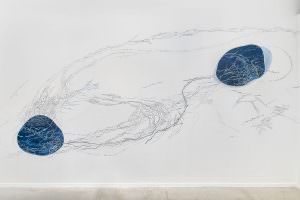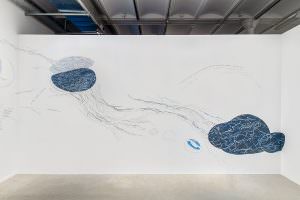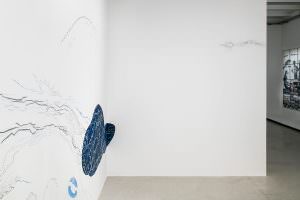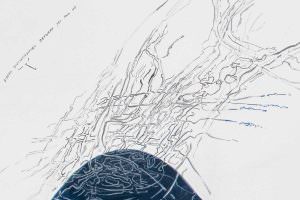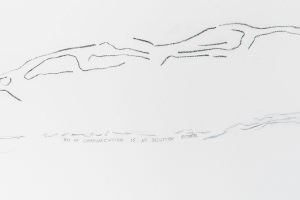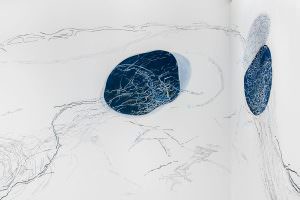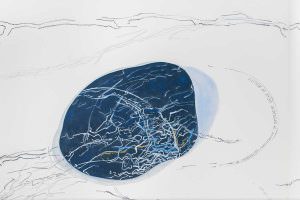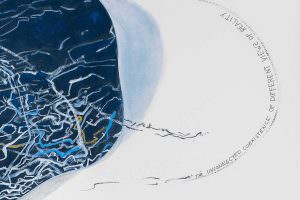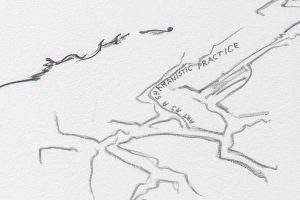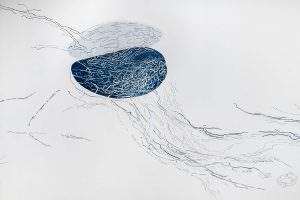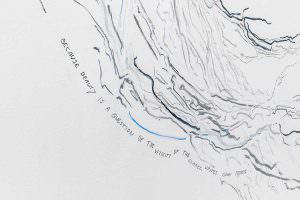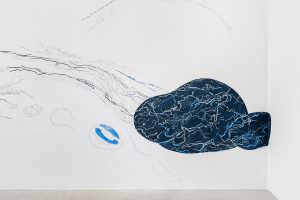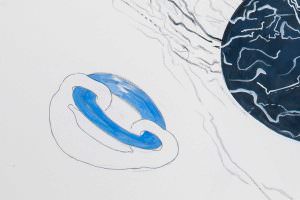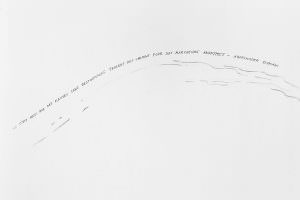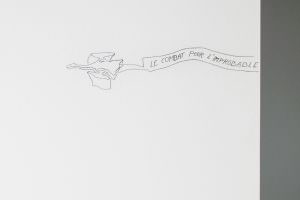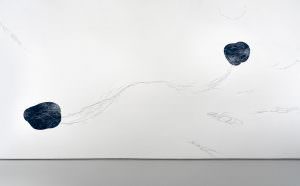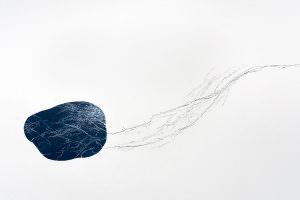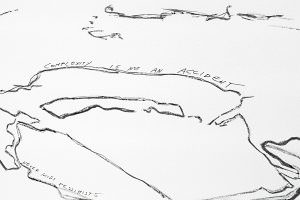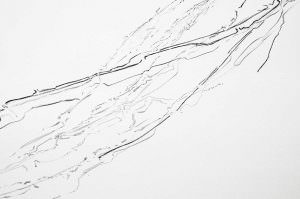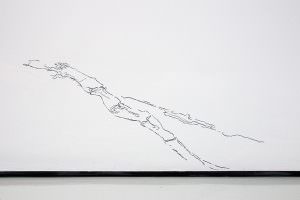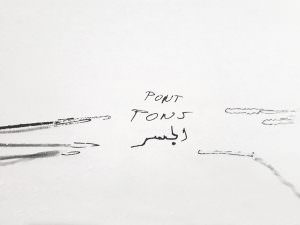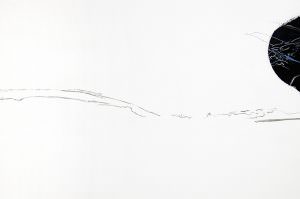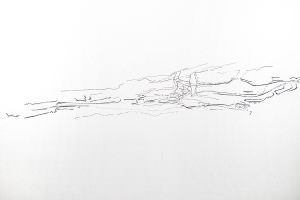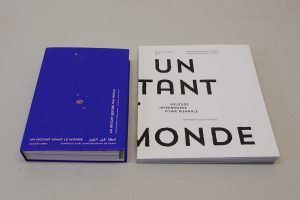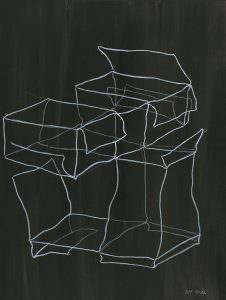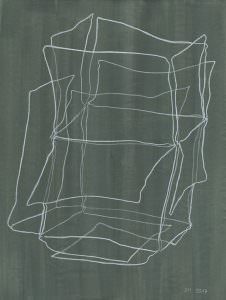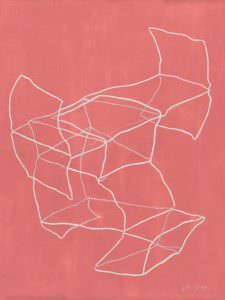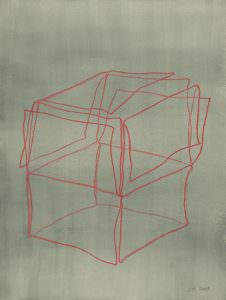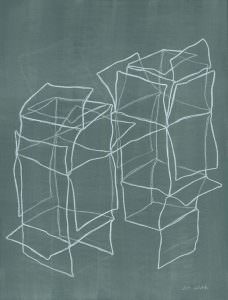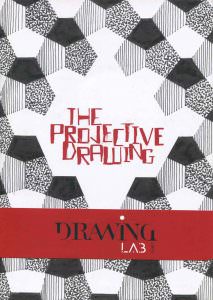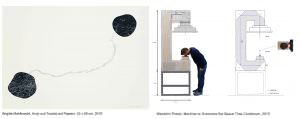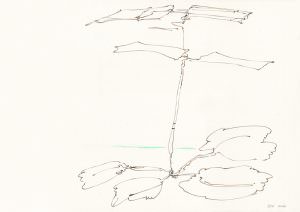scroll down for more informations about exhibitions, Murals and other In Situ Works
Brigitte Mahlknecht, Invisible Worlds - in situ
Schlebrügge.editor Wien/Vienna
Ein Kunstbuch mit Texten von Florian Andres, Abdelkader Damani, Marcello Farabegoli, Gundi Feyrer, Brigitte Mahlknecht
Gestaltung: Brigitte Mahlknecht
Deutsch/Englisch, 140 Seiten, 26 × 21 cm, zahlr. Abb. in Farbe, broschiert
ISBN 978-3-903447-08-0 € 26,00 [A] € 25,30 [D]
Buchpräsentation mit Gespräch / Book launch with a talk 11. Juni 2025 um 18:00 Uhr
Friedrich und Lillian Kiesler Privat Stiftung, Wien / Frederick and Lillian Private Foundation, Vienna
mit/with Brigitte Mahlknecht, Valerie Messini, Johannes Schlebrügge, Gerd Zillner
Das Kunstbuch Brigitte Mahlknecht, Invisible Worlds - in situ dokumentiert mehrere Wandarbeiten und eine monumentale Bodenmalerei, alle mit dem Titel Invisible Worlds - ..., die ursprünglich in Zusammenarbeit mit dem Kurator Abdelkader Damani und dem Frac Centre-Val de Loire für die Biennale von Rabat und für das Frac Centre in Orleans entwickelt wurden und in Folge auch an anderen Orten in einer jeweils neuen für den spezifischen Zusammenhang realisierten Variante gezeigt wurden.
Ein Großteil der in diesem Band abgebildeten Werke existiert nicht mehr oder nur mehr zum Teil. Sie wurden zum Anlass der jeweiligen Ausstellungen bzw. Biennalen im Zeitraum von einer bis drei Wochen an Ort und Stelle geschaffen und am Ende der Ausstellungen wieder mit Wandfarbe übermalt, mit Hochdruckwasserstrahler entfernt oder auch abgebaut, zusammengerollt und verpackt. In den Kontexten, für die sie erstellt wurden, existieren sie nur noch in der Dokumentation.
Die hier gezeigten Arbeiten haben sich „nur“ aus dem Zeichnen entwickelt. Dass dabei Felder erzeugt wurden, die wie emblematisch für gesellschaftliche Themen stehen können, zeigt, dass vermeintlich abstrakte Zeichen Informationsträger sein können, so als gründeten sie sich auf ein Energiefeld aus Erfahrungen, Emotionen und Wissen. Die Einbettung in von außen hergestellte Zusammenhänge verleiht ihnen eine jeweils neue Bedeutung und macht sie zu Beiträgen für das Nachdenken über Wanderbewegungen in der Welt und die an Edouard Glissant anschließende „Kreolisierung“, über den Kampf um Gleichberechtigung, über Wetter und Klimaphänomene, die Darstellung von Strömen in unterschiedlichem Sinn, Urbanismus und anderes.
The art book Brigitte Mahlknecht, Invisible Worlds - in situ documents several wall works and a monumental floor painting, all entitled Invisible Worlds - ... which were originally developed in collaboration with the curator Abdelkader Damani and the Frac Centre-Val de Loire for the Rabat Biennale and for the Frac Centre in Orleans and were subsequently also shown in other locations, each time in a new version realised for the specific context.
For the most part the works reproduced in this volume no longer exist, or are only partially preserved. They were all created on site over a period of one to three weeks, all for specific exhi-bitions or biennales, and once the shows had ended the works were either painted over, washed off with a high-pressure hose, or taken apart, rolled up, and packed away. In the contexts for which these works were intended, documentation is all that remains.
The works shown here were developed ‘merely’ out of practices of drawing. The fact that they generated fields capable of standing as though emblematically for societal themes demonstrates the way that seemingly abstract signs can become bearers of information, as though they were grounded in an energy field made up of experiences, emotions, and knowledge. Embedding the works in an externally-created context lends them new significance in each specific case, and allows them to contribute to a reflection on migratory movements in the world, on the struggle for equal rights, on the weather and phenomena of the -climate, on the representation of the various meanings of flows, on -urbanism, and more.


Looking Elsewhere Beeng There
CerModern Art Center - Ankara
25.09. - 03.11.2024
An exhibition in cooperation with the Embassy of Italy and the Embassy of Austria in Turkey about relations and belonging on-the-move between different countries.
Curated by Marcello Farabegoli
Co-curators: Charlotte Aurich & Pablo Chiereghin
What does it mean to direct one’s gaze elsewhere? The group exhibition “Looking Elsewhere Being There” explores the concept of movement as an intrinsic element of place. Initiated by the Embassy of Italy in Türkiye in collaboration with Marcello Farabegoli Projects and the CerModern Arts Center in Ankara, it illuminates artistic practices that cross borders and engages with movement as it relates to place, emphasising transformation, transition, and translation. Being somewhere inherently involves positioning and orientation: From what vantage point do we perceive a place? How do we situate ourself within the web of relationships? As a complex weave of political, cultural, and material histories, this idea of place demands innovative narratives and methods of inquiry to explore its contours and boundaries. By bringing together artistic practices that have evolved from this mode of movement, the group show aims to uncover the surprising connections and images that constitute spatial and social relations, offering space for perspectives of looking, moving, and being elsewhere.
http://www.marcello-farabegoli.net/cermodern/
hoffentlich wenigstens
Eine Ausstellung über Zeichnung, Grafisches und das Wenige in Bezug zum Rest
Philipp Hoelzgen, Paula Kreuzer, Johnny Linder, Brigitte Mahlknecht, Gabriele Rothemann, Florian J. Schwarz
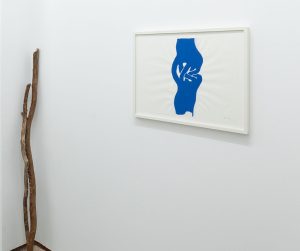
Sequenzen
Stadtgalerie Brixen, Galleria Civica Bressanone
Vernissage 20.9.2023, 18.00 Uhr

Sequenzen sind eine Abfolge von inhaltlich oder formal verwandten Themen. Diese Themen können aufeinanderfolgen, miteinander interagieren und sich ergänzen. So gesehen übernehmen die ausgestellten Werke genau diese Rolle, wobei das verbindende Element, der Raum und die Interpretation desselben ist. Raum und die Auseinandersetzung damit, ist eigentlich eine zutiefst bildhauerische und architektonische Aufgabenstellung oder Herausforderung. In dieser Ausstellung werden die bildhauerischen und architektonischen, also die dreidimensionalen Werke mit malerischen oder zeichnerischen, also zweidimensionalen Werken kombiniert. Den modellhaften Objekten werden Ölmalereien, Zeichnungen und Collagen gegenübergestellt. Die unterschiedlichen Kunstgattungen verstärken, ergänzen und komplettieren sich durch dieses gleichberechtigte Nebeneinander. Dieses an sich schon komplexe Verständnis von Raum wird noch durch die akustische Ebene erweitert.
Sequences are a sequence of topics related in content or form. These themes can follow each other, interact with each other and complement each other. Seen in this light, the exhibited works take on precisely this role, whereby the unifying element is space and the interpretation of it. Space and the engagement with it, is actually a deeply sculptural and architectural task or challenge. In this exhibition, the sculptural and architectural, i.e. the three-dimensional works are combined with painterly or graphic, i.e. two-dimensional works. The model-like objects are juxtaposed with oil paintings, drawings and collages. The different genres of art reinforce, complement and complete each other through this equal juxtaposition. This already complex understanding of space is further expanded by the acoustic level.
Zeichnen als quasi archetypische Geste. Ich zeichne, also bin ich.
Neue Wiener Gruppe / Lacan-Schule, Sektion Ästhtik/Logik - Vortrag
Piaristengasse 35, 1080 Wien, 15. Mai 2023, 19:30 Uhr
„Keine Zeichnung ist unbedeutend genug, als dass sie nicht der Betrachtung wert wäre...“ schreibt Horst Bredekamp, wohl weil eine Linie die Spur einer Geste ist, die jede Person gemacht haben könnte, und sich also jede/r mit der Zeichnerin identifizieren kann. Oder weil wir alle SpurensucherInnen sind. Wer kann das lesen, was ich zeichne und warum? Gibt es Bilder, die wir alle verstehen und würde das dann nicht bedeuten, dass die Bilder schon irgendwo in den Tiefen des Bewusstseins vorhanden sind? Dann muss ich als Zeichnerin Strategien finden, diese Bilder an die Oberfläche dringen zu lassen.
Biennale d'Art et d'Architecture du Frac Centre-Val de Loire à Vierzon
Infinie liberté, un monde pour une démocratie féministe
16/09/2022 - 01/01/2023
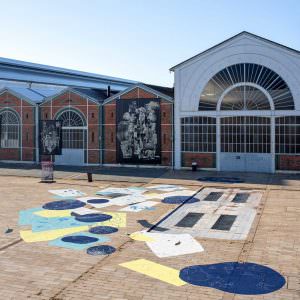
drone foto: Yoan Le Gruiec, detail photos: Brigitte Mahlknecht
Inspired by antique mosaics
A walkable monumental floor painting created outdoors, on the Esplanade la Française, the square in front of the old industrial building, the main venue of the Biennale. Painted directly on the stone slabs with weather- and impact-resistant colours, size: 25 x 10 metres. The director of the Frac Centre-Val de Loire, Abdelkader Damani itself, art installers Pierre-Loic Bailleul and Fabrice d'Aessandro, as well as two art students, each helped to paint the fields for a few hours. In total, however, the work took 19 days. Brigitte Mahlknecht completed the monochrome colour fields with detailed brush drawings.
Although produced with the tools of street art, the inspiration comes from much older and longer-lasting works, for example the ancient mosaics in Ostia Antica and Herculaneum. Networks of lines on cobalt-blue round shapes signal the reference to world images and maps, with urban forms and beings appearing in between. The visitor can let himself be guided by the drawings and thus walk along the whole picture. Since the ancient Greeks, we have known the connection between walking and thinking, walking and discussing. "The Greek philosopher Aristotle had developed a method which he called "promenade" (Greek: "peripatos") and which he applied to his students. Philosophy was experienced as a walk in an unenclosed space, far away from the lectures at the university." (Wikipedia)
We also know the flaneur in the city and in literature. This is also how the artist understands this oversized painting. A territory is marked with paint in order to stroll on it, to enter into conversation with oneself or a companion while walking along and looking at drawings.
The painting leaves the exhibition space and gets its exhibition place directly on the public square, becomes a city square.
On the aerial photograph, a drone shot, it could be interpreted as an urbanistic project. As an image very abstract and intuitive, its an invitation for interpretation into a realizable reality.
Inspiriert von antiken Mosaiken
Ein begehbares monumentales Bodengemälde im Freien geschaffen, auf der Esplanade la Française, dem Platz vor dem alten Industriegebäude, dem Hauptschauplatz der Biennale. Mit wetter- und stoßfesten Farben direkt auf die Steinplatten gemalt, Größe: 25 x 10 Meter. Geholfen haben dabei für jeweils ein paar Stunden der Direktor des Frac Centre-Val de Loire, Abdelkader Damani selber und Artinstaller Pierre-Loic Bailleul und Fabrice d´Aessandro, sowie zwei Kunststudenten. Insgesamt aber hat die Arbeit 19 Tage gedauert, Brigitte Mahlknecht hat die monochromen Farbflächen mit detailierte Pinselzeichnungen vervollständigt.
Obwohl mit den Mitteln der Streetart hergestellt, kommt die Inspiration von sehr viel älteren und langlebigeren Werken, zum Beisoiel den antiken Mosaiken in Ostia Antika und Herculaneum. Liniengeflechte auf kobaltblauen runden Formen signalisieren den Bezug zu Weltbildern und Landkarten, dazwischen erscheinen urbane Formen und Wesen. Der Besucher kann auf dem Bild gehend sich von den Zeichnungen leiten lassen und so betrachtend das ganze abschreiten. Seit den antiken Griechen kennen wir den Zusammenhang zwischen Gehen und Denken, Gehen und Diskutieren. „Der griechische Philosoph Aristoteles hatte eine Methode entwickelt, die er "Promenade" (griechisch: "peripatos") nannte und die er auf seine Schüler anwendete. Die Philosophie wurde als Spaziergang in einem nicht geschlossenen Raum erlebt, weit weg von den Vorlesungen an der Universität.“ (Wikipedia)
Wir kennen auch das Flanieren in der Stadt und den Flaneur in der Literatur. So versteht die Künstlerin auch dieses überdimensionale Gemälde. Mit Farbe wird ein Territorium markiert, um darauf zu wandeln, um beim Abschreiten und Betrachten von Zeichnungen mit sich selber oder einem Begleiter ins Gespräch zu kommen.
Das Bild verlässt den Ausstellungsraum und bekommt seinen Ausstellungsort direkt auf dem öffentlichen Platz, wird zum Platz in der Stadt.
Auf dem Luftbild, einer Drohnennaufnahme, könnte man es als ein urbanistisches Projekt interpretieren. Als Bild sehr abstrakt und intuitiv, bietet es ein Angebot der Interpretation in eine umsetzbare Realität.
Artistes et architectes, Nouvelles productions et œuvres de collections:
Ana Maria Arévalo Gosen, Louisa Babari, Sophie Berthelier et Véronique Descharrières, Tatiana Bilbao, Flora Bouteille, Agence d’architecture Bientôt : Delphine Charnacé, Tifenn Taillandier, Charles Poulain, Gabriel Violleau et Gautier Martin, Iwona Buczkowska, Clémentine Chalançon, Jenny Charreton, Katharina Cibulka, Rokhaya Diallo, Penda Diou, Férielle Doulain, feminist architecture collaborative : Virginia Black, Rosana Elkhatib et Gabrielle Printz, Renée Gailhoustet, Habibitch, Zaha Hadid, Clarisse Hahn, Angela Hareiter, Anne Houel, Saba Innab, Flora Jamar, Mouna Jemal Siala, Hanna Kokolo, Anne Lacaton, Cécile Le Talec, Brigitte Mahlknecht, Maria Mallo Zurdo, Ovidie, Anna Ponchon, Anila Rubiku, Leïla Saadna, Mairea Séguí-Buenaventura, Pascale de Senarclens, Giovanna Silva, TAKK : Mireia Luzárraga et Alejandro Muiño, Ségolène Thuillart, Laure Tixier, Lindsey Tramuta, Elvira Voynarovska.
Écoles : l'École Nationale Supérieure d’Art de Bourges : Agathe Flamant, Juliette Duval, Yuan Hong, Alice Le Quellec, Xilong Cao et Yu Zhiming. L'École Polytechnique de Valence en Espagne : professeure Mónica García Martínez, et guest professeure María Jesús Muñoz Pardo et ses étudiants.
Günther Domenig Dimensional
Von Gebäuden und Gebilden
Heft in Hüttenberg, Kärnten, Österreich / Carinthia, Austria, 2022
Eröffnung/opening 11.06.2022
Günther Domenig: Dimensional. Von Gebäuden und -Gebilden was an exhibition at four locations in Carinthia that
for the first time presented the architect’s work as a comprehensive show, contextualised through contemporary artistic and architec-tural positions. One location was the Heft in Hüttenberg, an abandoned ironworks in the market town of Hüttenberg, where
Domenig had designed an exhibition structure for the 1995 -Carinthian Provincial Exhibition. The design, as Friedrich Achleitner wrote, was a metaphor which made the underground tunnels structurally visible and usable as exhibition spaces. Since the structure fell out of use again once the exhibition was over, the scaffolding began to rust after a mere three years and a further process of decay set in.
VALERIE MESSINI who not only curated the exhibition in the Heft, but also participated as an artist with an augmented reality work, wrote: ‘The spaces generated (by deconstructivist architecture) are sculptural and fluid, the boundary between outside and inside is distorted, the views are multidirectional. In the same way, the Heft is characterised by the intertwining of interior and exterior spaces. [...] In her work Invisible World, part of the exhibition at the Heft, Brigitte Mahlknecht understands space “as experiential space, space as philosophical space in the phenomenological sense, as poetic and as political space, spaces that overlap and intersect”. She describes performative spaces that can be experienced physically and hold affective potential’. And referring to Marie-Luise Angerer: ‘The increased interest in the affective is evidence of a longing for a concept of reality that goes beyond linguistic-analytical reflection and opens up access to the world also through aesthetic perception. Angerer demonstrates that the digital and the affective have something in common: both want to establish a direct access to the human brain or organism.’
AIL Angewandte Innovation Lab
Vienna
:: KAIROS Recall of Earth
Vernissage: 11. Nov, 2021 18.00 - 22.00
Duration: 12.11. - 21.01.2022
Curator: Sophia Panteliadou
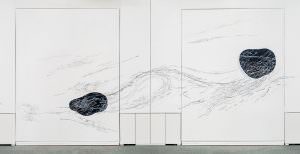
Artists: Irini Athanassakis, Ulla von Brandenburg, Lauras Edelbacher, Thomas Glänzel, Maria Hubinger, Anni Kaltsidou, Matthias Kessler, Peter Kubelka, Alfred Lenz, Brigitte Mahlknecht, Josefina Nelimarkka, Patricia J Reis, Ruth Schnell, Christian K. Schröder, Helmut Swoboda, Anna Watzinger
: : KAIROS. Recall of Earth addresses the relationship between humans and natural events. The term kairos relates to natural phenomena on the one hand and to temporality on the other – kairos is the modern Greek word for “weather”, but it also means “the right moment”. The ambiguity inherent in this word runs like a golden thread through the exhibition. Starting out with meteorological aspects regarding the “weather”, the exhibition also tries to draw a picture of the psyche and its entanglement with natural phenomena. The boundaries between different levels of perception dissolve; the influence of the outside world becomes tangible and visible; the illusion of being able to control perceptions falls victim to deception itself. The show explores the contribution of the abstract cosmic and the concrete terrestrial conception of space in relation to space/time, which can no longer be reduced to a philosophical-transcendental a priori as the still prevalent division of social contexts and nature, of bodies and the psyche needs to be called into question. The exhibition tries to trace possible dividing lines between geological and human resources. Because, as Bruno Latour points out, “[...] the Terrestrial [...] is political, [...]; but it is not statist. It is, literally, atmospheric.”* Maybe ...
* Bruno Latour, Down to Earth: Politics in the New Climatic Regime, Polity Press, 2018, 93.
angewandteinnovationlab.at
Georg-coch-Platz 2, 1010 Vienna
Intelligibles Zeichnen
Gastprofessur an der Universität für Angewandte Kunst, Wien
in der Klasse Fotografie von Gabriele Rothemann
Wintersemester 2021
Museum Franzensfeste / Museo Fortezza
Lockout
Vernissage: am 12. September 2020 um 11.00 Uhr
Ausstellungsdauer: 12.09. - 8.11.2020
48 Künstlerinnen und Künstler zeigen ihre persönliche Perspektive auf den Lockout. Der Ausstellung liegt eine Serie von Interviews nach dem Muster des Marcel Proust'sche Fragebogens zu Grunde, die während und nach dem Lockdown in der Neuen Südtiroler Tageszeitung erschienen sind.
48 artists show their personal perspective on the lockdown. The exhibition is based on a series of interviews, based on Marcel Proust's questionnaire, which appeared in the Neue Südtiroler Tageszeitung during and after the lockdown.
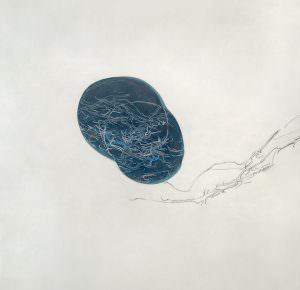

AliPaloma, Andrea Varesco, Andreas Zingerle, Anuschka Prossliner, Arnold Dall`O, Aron Demetz, Beate Gantz, Berty Skuber, Brigitte Mahlknecht, Christine Gallmetzer, Eduard Habicher, Elisa Grezzani, Erich Dapunt, Erika Inger, Franz Pichler, Gino Alberti, Gotthard Bonell, Gregor Prugger, Heinz Innerhofer, Hermann Josef Runggaldier, Ivo Mahlknecht, Jakob De Chirico, Jette Christiansen, Jörg Hofer, Josef Rainer, Julia Bornefeld, Katrin Böge, Leonhard Angerer, Leonora Prugger, Linda Jasmine Mayer, Lois Anvidalfarei, Maria Walcher, Michael Höllrigl, Paula Regina Prugger, Peter Senoner, Robert Bosisio, Robert Pan, Sara Welponer, Sebastian Kulbaka, Sissa Micheli, Stefan Tschurtschenthaler, StegerLois, Thaddäus Salcher, Thomas Riess, Ulrich Egger, Werner Gasser, Wil-ma Kammerer, Wolfgang Wohlfahrt.
http://www.franzensfeste.info/lockout
Franzenfeste Fortress
Via Brennero, 39045 Fortezza (BZ), South Tyrol – Italy
Sehsaal Wien
fake & fragment
Vernissage: 17. Juni 2020 von 17 – 22 Uhr
Human Installation by Ablate Mountain Productions
Ausstellungsdauer: 17.6.2020 – 11.7.2020
geöffnet jeweils MI, DO, FR 14-18 Uhr
Elisabeth Czihak, Regula Dettwiler, Melanie Dorfer, Gunda Gruber, Herbert Hofer,
Matthias Klos, Brigitte Mahlknecht, Liddy Scheffknecht, Michael Wegerer, Fridolin Welte
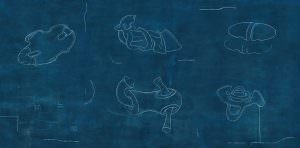
Die Zeichnung „Selbstdurchdringungen“ wirkt auf den ersten Blick wie eine technische Darstellung von organischen Formen. Mehrere „Objekte“ stehen einzeln und voneinander abgesetzt auf einem Blatt, so als möchte man Dinge anschaulich katalogisieren oder wie man es von Naturstudienblättern kennt. Die gezeichneten „Objekte“ entstanden aus der Überschneidung dreier Interessensfelder: höherdimensionale Räume und ihre Darstellung in der Topologie (einem Feld der nichteuklidischen Geometrie), Zeichnungen Friedrich Kieslers zu seinem „Endless House“ und erotische Formen in der Pflanzenwelt
At first glance, the drawing "self-penetrations" appears to be a technical representation of organic forms. Several "objects" stand individually and separated from each other on one sheet, as if one wanted to catalogue things vividly or as one knows it from nature study sheets. The drawn "objects" arose out of the overlapping of three fields of interest: higher-dimensional spaces and their representation in topology (a field of non-Euclidean geometry), drawings by Friedrich Kiesler on his "Endless House" and erotic forms in the plant world.
Frac - Centre Val de Loire
Orléans
Ailleurs ... ou plus loin
Curator: Abdelkader Damani
12. 3. 2020 – 28. 2. 2021
Artistes exposés:
Daphné Bengoa, Deborah Benzaquen, Sophie Calle, Sonia Gassemi, Klaus Gartler & Helmut Rieder, Jochen Gerz, André Guiboux, Mouna Jemal Siala, Oum Kalthoum, Brigitte Mahlknecht, Manthey Kula, Naziha Mestaoui, Giovanna Silva, Lawrence Weiner
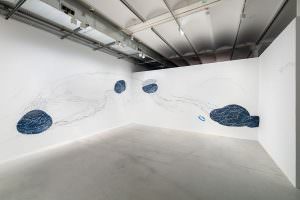
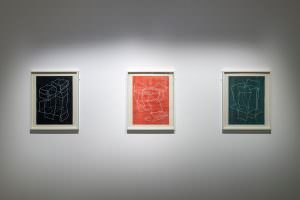
GEHEN WANDERING ERRANCE
Avec l’exposition ailleurs… ou plus loin, le Frac Centre-Val de Loire poursuit son exploration de la notion d’errance. Cette éternelle quête de soi et des autres, du monde réel et du rêve aboutissant au même résultat d'incertitude, voire d'illusion, mais toujours à proximité d'une vérité.
Partir ailleurs, pour se retrouver soi. Et d’autres. Partir ailleurs pour échapper à la monotonie et à la routine. Vivre une expérience qui se dérobe aux prédictions et aux contrôles sans qu’elle ne se mesure à la distance parcourue et au temps passé. Parce qu’il s’agit à la fois d’une traversée dans le temps ou dans l’espace, d’une quête de soi en même temps que d’une découverte de l’autre, le désir de l'ailleurs, la poursuite du lointain, agissent comme des processus transformateurs, initiatiques qui enfanteront d'un nouveau monde semblable et si différent de celui du départ.
Mit der Ausstellung ailleurs ... ou plus loin (Anderswo... oder noch ferner), setzt das Frac Centre-Val de Loire seine Erforschung des Begriffs des Wanderns fort. Diese ewige Suche nach sich selbst und nach dem anderen, nach der realen Welt und nach Träumen, führt zum immer gleichen Ergebnis von Ungewissheit, ja sogar von Illusion, aber immer nahe an einer Wahrheit...
... Anderswo hingehen, um der Eintönigkeit und Routine zu entfliehen. Eine Erfahrung machen, die sich Vorhersagen und Kontrollen entzieht, sich nicht an der zurückgelegten Strecke und der aufgewendeten Zeit misst. Denn es ist sowohl ein Durchqueren von Zeit und Raum, als auch eine Suche nach sich selbst und der Entdeckung des anderen. Die Sehnsucht und Suche nach dem Woanders, die Erforschung der Ferne wirken als transformative, initiatorische Prozesse, für eine neue Welt, ähnlich wie und so anders als die Welt vorher.
DRAWING AS A SHAMANISTIC PRACTICE
Details:
MIET – Thessaloniki
KAIROS, Recall of Earth
Ανακάλεσμα της Γης
A project at the influence of visual arts, meteorology and philosophy
Curator: Sophia Panteliadou
MIET, Villa Kapantzi, Leof. Vasilissis Olgas 108, Thessaloniki, Greece
The Cultural Foundation of the National Bank of Greece.
28. November 2019 – 26. Jänner 2020
Das Wort Kairos kann sich auf natürliche Phänomene (Wetter), es kann sich jedoch auch auf Zeitlichkeit (Zeit) beziehen. Die diesem Wort innewohnende Mehrdeutigkeit ist das Hauptthema der Ausstellung. „KAIROS, Recall of Earth“ ist eine medienübergreifende Ausstellung, die das Verhältnis zwischen Mensch und Phänomenen natürlicher Ereignisse, also die Vielfalt möglicher Verstrickungen zwischen Mensch und Natur thematisiert. Die Ausstellung zielt darauf ab, ein Bild der Psyche in Bezug auf die Auswirkungen natürlicher Phänomene auf den Menschen und den Planeten Erde zu zeichnen. Die teilnehmenden Künstler haben diese Idee als Ausgangspunkt genommen, um über verschiedene Medien gesellschaftliche und alltägliche Fragen zu reflektieren, um komplexe Prozesse visuell oder konzeptuell sichtbar zu machen. Die Grenzen zwischen den Wahrnehmungsebenen zerfliessen. Der Einfluss der Außenwelt wird greifbar und sichtbar. Empfindungen werden in den Körper geschrieben. Die Illusion, Wahrnehmungen kontrollieren zu können, bringt die Erfahrungen der eigenen Deregulierung.
The word kairos might refer to natural phenomena (weather), however, it also might refer to temporality (time). The ambiguosity inherent to this word is the main subject of this exhibition. “KAIROS, Recall of earth”, is a cross-media exhibition discussing the relationship between humankind and the phenomena of natural events, in other words, it addresses to the diversity of possible entanglements between humans and nature.
The exhibition aims at drawing a picture of the psyche, with regard to the impact of natural phenomena on humans and the planet Earth. The participating artists took this idea as a starting point to re_lect upon questions of society, everyday life, by means of different media, in order to give visibility to complex processes, being it visually or conceptually. The boundaries between levels of perception start to _low. The in_luence of the outside world becomes tangible and visible. Sensations are written in the body. The illusion of being able to control perceptions brings forward the experiences its own deregulation.
https:// www.miet.gr/en/event-list/event-KAIROS-Anakalesma-ths-Ghs
"I am I because my little dog knows me, but ..." Gertrude Stein
4`18
Sizilien / Sicily 2008 - 2016
Biennale Rabat 2019, Morocco
Un instant avant le monde
Fondation des Musées du Maroc
24. septembre - 18. décembre 2019
Commissaire / Curator: Abdelkader Damani, Directeur de: Frac Centre - Val de Loire, Orléans
Pour la première édition de la biennale de Rabat, le curateur algérien Abdelkader Damani réunira, du 24 septembre au 15 décembre, une soixantaine d’artistes femmes autour du thème Un instant avant le monde. « Par ce geste radical, la Biennale se veut l’endroit, à l’échelle mondiale, où s’écrit une nouvelle histoire de l’art à partir des revendications, des imaginaires, des rêves et des récits des artistes femmes. C’est aussi l’espace pour faire avancer les droits des femmes à l’égalité ».
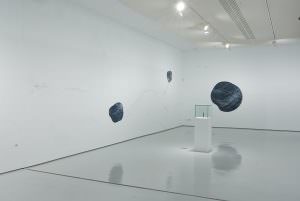
(Das griechische Wort für Meer, pontos, ist verwandt mit dem lateinischen pons, die Brücke, und dem griechischen Pathos, der Pfad, schreibt Egon Fridell)
(The Greek word for sea, pontos, is related to the Latin pons, the bridge, and the Greek patos, the path, Egon Fridell wrote.)
From an interview with Traudi Messini about the Rabat Biennale:
„...Glissant's theme is the creolisation of the world. He is very concerned with what happens when different cultures collide and interpenetrate. His aim is to achieve a world, in whitch I don't always have to understand the other, but where diversity itself is seen as an enrichment. A strong vision of a world in which cultural diversity can flourish. This is a concept that suits me anyway. I myself never wanted to live in a homogeneous (conservative) society, but in an environment that inspired me by the diversity of lifestyles and in which I could choose my role. Being surrounded by several languages and cultural origins makes me feel alive...
The title of my wall piece is "Invisible Worlds" like the title of my last book, maybe a variation of The Invisible Cities by Italo Calvino.
A work reminiscent of maps or cosmological representations that spreads over two walls. One wall is 9 meters long, the other 5 meters. Despite its size, it is a fragile work. The viewer has the feeling that they represent something specific, something one believes to know and at the same time it escapes from the exact purpose.
I think my work fits very well with the concept of the Biennale. Behind this lies the idea of superimposed worlds, connecting worlds, penetrating worlds...
It is becoming increasingly clear that the theme of space is central to my work. I create imaginary spaces. What restricts me in the real world, I try to make possible in my inner world. Freedom of movement is also a mental question...
Changes on a scale, like here, when the themes that are usually dealt with in small-format drawings are translated into a larger wall piece, change the interpretation. A large work is also perceived physically. This work can not only be seen with one's eyes, but can and should also be paced off."
In the invitation to the artists the curator wrote:
The biennale project gather a protocol and an artistic direction.
The protocole : Only female artist and architects are invited/
The artistic direction : the subject / thematic will be to reconsider the beginning of space, the beginning of the world. In what condition and time can we imagine to rewrite and to redesign the beginning of what is the most problematic thought : a space that is at the same time mine and not mine.
The subject of the biennale is about rethinking the origin of the world, give up all hope of changing it and replace that with a new perspective: remake the world since its beginnings. This is why we will try to comeback to all what is, for us, as the representation of the beginnings. To rename every fragment of a life: lands, lights, skies, human beings, gender..
We are in Morocco, the fare-west, the end of land. After Rabat we have the melancholia of the horizon of sea. And from this end of land we want to imagine a world built in a different way with female artists and architects.
Our hope will be to highlight a new landscape of aesthetic with this new biennale. This landscape is designed as a painting or a movie, with three plane/shot:
- the first is dedicated to wandering : wandering is not about traveling, moving or passing. Wandering is about the desire to all the world, knowing that it’s impossible. No one and no condition, can refuse to anybody this impossible desire.
[…] dans la poétique de la Relation, l’errant, qui n’est plus le voyageur ni le découvreur ni le conquérant, cherche à connaître la totalité du monde et sait déjà qu’il ne l’accomplira jamais – et qu’en cela réside la beauté menacée du monde.
Edouard Glissant, Poétique de la relation, Poétique III, Gallimard, 1990
- the second is dedicated to the "nostalgia for our imbalances »
- and the last shot, in the center of this perspective, hosts "a subversive tenderness" that we consider as the last form of possible subversion.
Drawing Lab Paris
The Projective Drawing 2
Vernissage le 27 juin de 17H á 21H
Exposition de 27 juin au 20 septembre 2019
Exposition collective
Commissaire d´exposition: Brett Littman
Avec les artistes:
Naomi B.Cook, William Cordova, Lionel Favre, Sara Flores, Brigitte Mahlknecht, Keita Mori, Master Moriguchi, Raha Raissnia, Judith Saupper et Leopold Strobl.
Le Drawing Lab Paris invite Brett Littman, directeur du Isamu Noguchi Foundation et Garden Museum et ancien directeur du Drawing Center de New York, à redévelopper l’exposition collective The Projective Drawing (Le dessin projectif) qui s’est tenue au Forum culturel autrichien de février à mai 2018.
L’exposition s’inspire du livre The Projective Cast, publié en 1995, dans lequel l’historien d’architecture Robin Evans propose une nouvelle explication de notre façon de “voir” l’architecture en incluant toutes les différentes facettes, au niveau du mental, du physique et de l’émotionnel, qui composent l’expérience humaine du bâti. Dans The Projective Drawing le commissaire d’exposition Brett Littman applique la théorie d’Evans, qui porte un regard sceptique sur le dessin en tant que moyen de compréhension des fondements de l’architecture, pour remettre en question notre compréhension du fonctionnement de la technique du dessin dans la culture contemporaine en mettant en avant les artistes dont les dessins demandent aux visiteurs d’activer une matrice complexe d’idées non traditionnelles dans leur interprétation des oeuvres présentées.
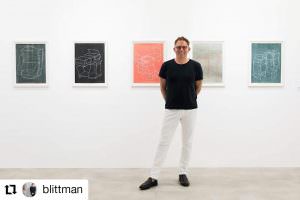
Kunsthalle West Eurocenter Lana
WELTANSCHAUUNGSBILDAPPARATUR
Brigitte Mahlknecht, Wendelin Presse
Eröffnung 21. 6. 2019, 19.30 Uhr
Kunsthalle West Eurocenter Lana
( ... ) Mit Karten als Schnittstelle zur Welt operieren auch Brigitte Mahlknecht und Wendelin Pressl. Wenn Karten Ordnungsräume sind – was sie zweifellos sind – sind Mahlknecht und Pressl Kartographen des Weglosen, des Verlierens in Zwischenwelten, des wechselseitigen Kontaminierens von Bild und Kartographie. Was sie kartieren, liegt jenseits territorialer Messlandschaften und abstrakt-geographischer Welterkundung. Statt Verortung zu bieten, driften sie in Entortung und stellen das Medium Karte als solche in Frage. ( ... )
Die Zeichnerin Brigitte Mahlknecht schaut nach unten, der Weltanschauungsapparturen-Bastler Wendelin Pressl nach oben. Er ist ein Kosmos-Schauer, sie eine Welt-Schauerin. Einige Arbeiten von Mahlknecht tragen den Titel „Weltbilder“, Pressl nennt seine aus Pappe, Lack und Holz gebauten Objekte „Weltanschauungsapparatur“ – woraus sich die hermetisch verdichtete Begriffskombination „WeltAnschauungsBildApparatur“ ergibt.
( ... ) Sinnfällig wird das in der „Maschine zur Überwindung des Raum Zeit Kontinuums“: Wer hineinschaut, sieht seinen Hinterkopf und damit sich selbst als Schauenden. Das Sehen des Sehens setzt eine minimale Zeitverschiebung voraus, sodass das Gesehene realiter bereits Vergangenheit ist. Das astronomische Instrument des Fernrohrs wird zum Nahsichtgerät, das in der Fokussierung auf ein Mauerstück gleichwohl aus dem visuellen Gedächtnis heraus ein Planetenbild erzeugt. ( ... )
Die ersten Flugzeug-Skizzen (von Brigitte Mahlknecht) sind ein schreibendes, notierendes Zeichnen (was durchaus im handschriftlichen Sinn zu verstehen ist), eine Phase der Direktheit und Unmittelbarkeit, bei der das Zeichnen jedoch nicht stehenbleibt. In einem zweiten Moment zeichnet sie diese Skizzen aus der Erinnerung heraus nach, womit weniger die Erinnerung an das Gesehene gemeint ist, als der Impuls, der sie dazu gebracht hat, zum Zeichenstift zu greifen. Vom hochgestochenen Pathos des einen inspirierten Moments hält Mahlknecht sich fern. Zeichnen ist für sie Verwandlung oder Zusammenführung von etwas, was man sieht und etwas, was im Kopf schon da ist. In der Zeichnung kommt zusammen – Sichtbares oder Imaginäres – was in ihrem Denken schon eine Verbindung eingegangen ist. (Heinrich Schwazer)
The Drawing Center 2018 Benefit Auction
Date: Monday, October 1, 2018
Time: 6:30-8:00PM
Location: The Drawing Center | 35 Wooster Street, NY
Museo Palazzo Ducale di Mantova LaGalleria
GRAFÈIN, Scrivere il segno - Writing the Sign
7.9. - 4.11.2018
Catalogo: Corraini Edizioni
Una mostra in condivisione con Corraini arte contemporanea, Mantova e Galerie Tanglberg, Vorchdorf, Austria
LaGalleria spazio arte contemporanea di Palazzo Ducale. Negli spazi della Galleria Arte Contemporanea i curatori dell’esposizione - Peter Assmann e Renata Casarin per Palazzo Ducale, Fabiola Naldi per Galleria Corraini – invitano 7 artisti a confrontarsi, ciascuno secondo la propria sensibilità, con un tema preciso divenuto anche il titolo della mostra "Grafèin– Scrivere il segno.”
L’esposizione indaga il processo grafico inteso nel suo idearsi e dipanarsi, comprendendo quindi anche l'accezione del linguaggio, del disegno ideato come scrittura e come segno. Gli artisti invitati sono Sergia Avveduti, Luca Barcellona, Giulio Camagni, Giovanni De Lazzari, Giuseppe De Mattia, Fausto Gilberti e Brigitte Mahlknecht, selezionati dai curatori per dar luogo a un dialogo aperto e propositivo in merito alla potenzialità espressiva e semantica del segno. Per rendere ancora più serrato il confronto, gli artisti saranno di volta in volta ospiti in residenza presso il Museo per dar loro modo di trarre suggestioni dal patrimonio della reggia gonzaghesca da condividere con il pubblico, al fine di promuovere una dinamica di reciproco interesse e scambio intellettuale. L’artifex opererà ne La Galleria, durante gli orari d’apertura, abitando un drawing spacequotidiano che vede l’intrecciarsi di competenze e esperienze per far scaturire molteplici riflessioni sui linguaggi della contemporaneità all’interno di una verosimile fucina creativa dell'artista.
A loro volta le opere dei giovani maestri entreranno in relazione con circa trenta opere di illustri nomi del Novecento e con significative incursioni dall’età del Rinascimento a quella del Romanticismo. La produzione grafica, tra gli altri, di Kubin, Kokoschka, Pisarro, Millet, sarà associata a quella più recente di Nitsch, Rainer, Fioroni, Munari e Cerone, provenienti in parte dalla Galerie Tanglberg di Vorchdorf (Austria) e in parte dalla Galleria Corraini di Mantova.
La complessa operazione di turnover degli artisti è sostenuta dalla Fondazione “Luigi ed Eleonora Gonzaga”.
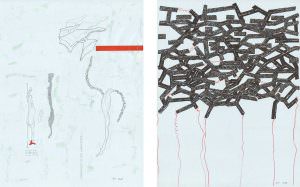
Symposium Zeichnen
Traunsee 2018
Kloster Traunkirchen
Icon Galerie Linz
Kunstraum K3 Simbach
Austrian Cultural Forum New York
The Projective Drawing
curated by Brett Littman, Executive Director of The Drawing Center, New York,
February 6 - May 13, 2018
Artists on view:
William Cordova, Lionel Favre, Sara Flores and the Shipibo Conibo Center, New York, Simona Koch, Brigitte Mahlknecht, Judith Saupper, Seher Shah, James Siena, Katrín Sigurdardóttir, and Leopold Strobl

The exhibition is based on The Projective Cast, a book published in 1995 by architectural historian Robin Evans that defines a new way to explain how we "see" architecture by incorporating all sensations that underpin the human experience of built structures (mental, physical, and emotional). In The Projective Drawing, curator Brett Littman applies Evans's theory, which is skeptical of drawing at its core, to challenge our understanding of how the medium of drawing operates in contemporary culture by highlighting both Austrian and international artists whose drawings require viewers to activate a matrix of complex and nontraditional ideas in order to interpret the works on view. Within the striking architecture of the Austrian Cultural Forum New York, designed by Raimund Abraham in 1992, the exhibition will unfold in a "projective" architectural space which reveals its non-linear structure and emotional impact as one perambulates through the building.
Judith Saupper and Lionel Favre, for example, have created site-specific installations that redefine the art of drawing, requiring the viewer to walk around, into, and even crawl under the works to fully experience them. James Siena, Brigitte Mahlknecht, and Seher Shah, likewise, transcend classic geometry to build contemporary visual spaces that can only exist suspended in our imagination. Leopold Strobl, who works with Galerie Gugging in Austria, creates miniature landscapes on old newspapers. Strobl's signature dark voids, which partially occlude the drawn landscape, prompt viewers to contemplate the essentially incomplete and partial nature of drawing. Katrín Sigurdardóttir's drawings for sculptural projects follow the artist's practice from conception to execution. Each work articulates drawing's inherent potential to impact the built world.
The Projective Drawing foregrounds artists who use drawing to visualize organic systems and abstract structures. Drawings created using plant extracts by the Shipibo artist Sara Flores are deeply tied to her relationship to the vegetal world and the healing ayahuasca ceremonies performed by shamans in the Peruvian Amazon. In a similar manner, collages and drawings by William Cordova amalgamate images to represent the body's relationship to vernacular architecture, sound, pop culture, and politics. Lastly, Simona Koch's large-scale genealogical maps highlight how drawing can visualize research, history, and networks.


Parallel Vienna 2017
With Orthner 2, Vienna
Parallel Vienna is taking place for the fifth time in Vienna and sticks to its approach of using abandoned property in the city centre as a presentation platform for young and established art. This year Parallel Vienna is using the premises of the “Alte Sigmund Freud University”, Schnirchgassse 9A, in the third district as a platform for contemporary art, thereby creating a unique framework.
Parallel Vienna 2017 is a hybrid between art fair, exhibition, gallery and studio. It is a curated art fair and the curatorial team invites every year selected galleries, artists, curators and project spaces.
Center for Artists’ Publications - Weserburg│Museum für Moderne Kunst
Künstlerbücher für Alles
Zentrum für Künstlerpublikationen
- Center for Artists’ Publications -
in der Weserburg│Museum für Moderne Kunst
Teerhof 20
28199 Bremen
Tel. +49 (0)421 59839-40
Eröffnung am 02. Juni 2017 um 19.00 Uhr
3. Juni – 06. August 2017
30 Jahre Galerie Cora Hölzl Düsseldorf in Wien
30 Jahre Galerie Cora Hölzl, Düsseldorf jetzt in Wien
in Kooperation mit driendl*architects
Samstag 1. Juli, ab 18 Uhr
Sie und Ihre Freunde sind herzlich eingeladen
mit uns und den Künstlern zu feiern
driendl*architekts, Mariahilferstrasse 9, 1060 Wien
bis 1. Juli: Mi - Sonn- und Feiertag: 16 - 19.00 Uhr
Sehsaal Wien
Verschachtelnden und Felder
16. März bis 7. April 2017
Vernissage: Mittwoch, 15. März 2017, 19 Uhr
Einführung: Daniela Hölzl, Kunsttheoretikerin (Wien, Düsseldorf)
Parallel zur Ausstellung Filmscreening: »Gibellina Vecchia«
Finissage: 7. April 2017, 19h
mit Animationsfilmen von Jane Cheadle (Südafrika, London)
Ortner2 Wien
Unlesbare Briefe / Unreadable letters
Judith Ortner/Ortner2 lädt herzlich zur Präsentation der Vorzugsausgabe des Buches: Brigitte Mahlknecht - Invisible Worlds
am Donnerstag, den 23. Februar 2017, um 18.00 Uhr
in die Sonnenfelsgasse 8, 1010 Wien.
20 Vorzugsausgaben, bestehend aus jeweils einem Buch "Invisible Worlds" und einer Originalzeichnung jedes Blatt signiert, datiert und nummeriert, 27 x 20 cm, 2017
Die verschiedenen Zeichen- und Briefpapiere sind von Brigitte Mahlknecht unlesbar beschriftet und bezeichnet. Es entstanden Blätter, die, so die Künstlerin: "so aussehen, wie bei mir Briefe aussehen könnten, würde ich noch Briefe schreiben. So in etwa haben Briefe bei mir jedenfalls mal ausgesehen."
Kontakt:
Ordner2 / Judith Ortner
Sonnenfelsgasse 8
1010 Wien,
ortner@ortner2.at
Tel: 01-512 74 69
Öffnungszeiten: Di-Fr 13.00 - 19.00 Sa 11.00 - 16.00



